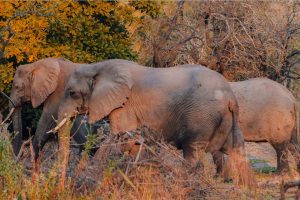Assessing Lion Population in Ngorongoro Crater
The Ngorongoro Crater, located in Tanzania, is home to a diverse array of wildlife, including a significant population of lions. In order to effectively manage and conserve these majestic predators, it is crucial to have accurate data on their numbers. One of the organizations at the forefront of this effort is Sunset Africa Safari, which conducts regular surveys to quantify the lion population in the Ngorongoro Crater.
Methods for Quantifying Lion Numbers
There are several methods that can be used to estimate lion populations in the wild, each with its own advantages and limitations. Sunset Africa Safari employs a combination of techniques to ensure the most accurate and comprehensive data possible.
One of the most commonly used methods for quantifying lion populations is the use of camera traps. These remote cameras are strategically placed throughout the Ngorongoro Crater, capturing images of lions as they pass by. By analyzing these photos, researchers can estimate the number of individual lions in the area and track changes in population size over time.
In addition to camera traps, Sunset Africa Safari also utilizes GPS collars to track the movements of individual lions. By monitoring the movements of specific lions, researchers can gain valuable insights into their behavior, habitat use, and interactions with other animals.
Another important method for quantifying lion populations is the use of aerial surveys. Sunset Africa Safari conducts regular aerial surveys of the Ngorongoro Crater, counting the number of lions spotted from the air. This method provides a broad overview of the lion population in the area and can help identify trends and patterns in their distribution.
Finally, Sunset Africa Safari also relies on traditional field surveys to gather data on lion populations. Researchers conduct ground-based surveys, counting lion tracks, sightings, and vocalizations to estimate the number of lions in the Ngorongoro Crater. These surveys provide valuable on-the-ground data that can complement the information gathered from camera traps, GPS collars, and aerial surveys.
In conclusion, quantifying the lion population in the Ngorongoro Crater is a complex and challenging task, but one that is essential for the conservation and management of these iconic predators. Through a combination of camera traps, GPS collars, aerial surveys, and traditional field surveys, Sunset Africa Safari is able to gather accurate and comprehensive data on lion numbers in the area. This information is crucial for informing conservation efforts and ensuring the long-term survival of lions in the Ngorongoro Crater.
For booking requests for a safari tour to the Ngorongoro Crater organized by Sunset Africa Safari, clients can contact info@sunsetafricasafari.com.



